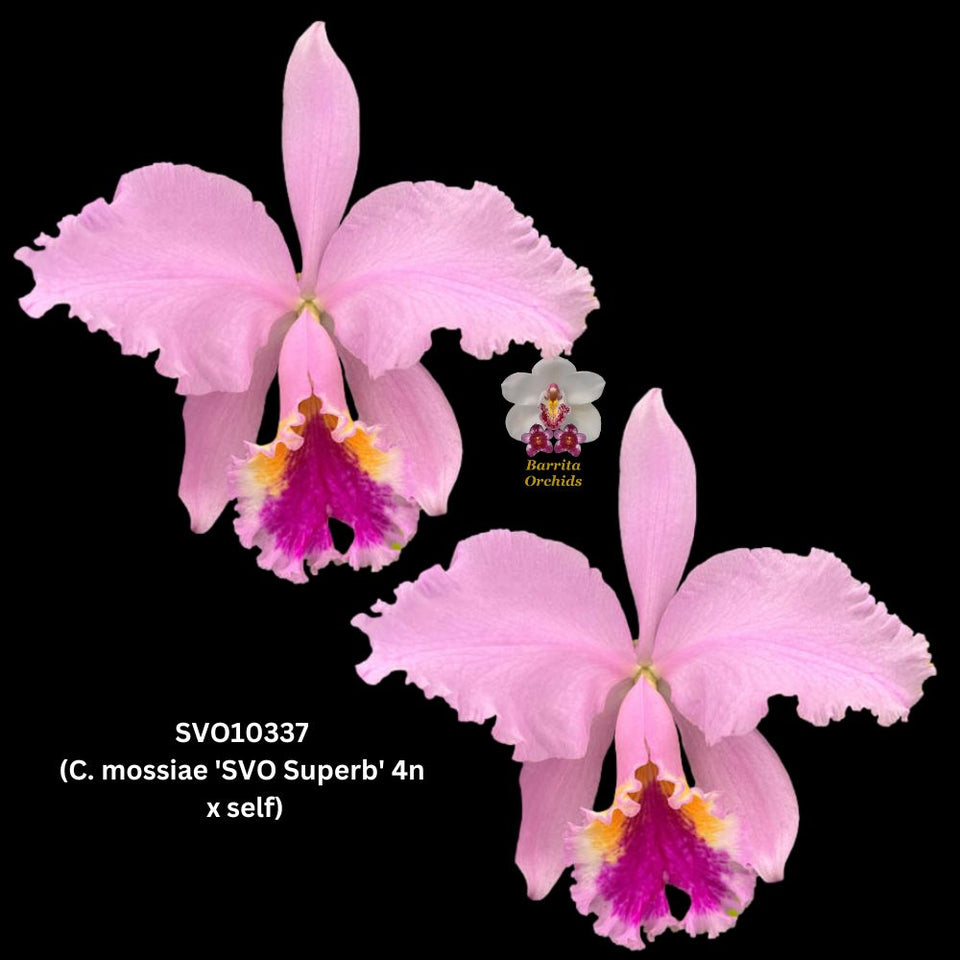Cattleya Mossiae, commonly known as Easter Cattleya, Easter Orchid, Moss Cattleya, or Mrs. Moss’ Cattleya, is a stunning perennial plant native to northern Venezuela. Belonging to the Orchidaceae family, this medium-sized epiphyte is celebrated for its fragrant blooms, which range in color from lilac-amethyst to purple-pink.
The flowers feature elongated, lanceolate sepals, with the lateral ones slightly shorter and curved like a sickle. The ovate petals have gracefully wavy edges, adding to their delicate charm. Renowned for its elegance, Cattleya mossiae is a favorite among orchid enthusiasts for its beauty and unique structure.
| Common name | Easter Cattleya, Easter Orchid, Moss Cattleya, Mrs. Moss’ Cattleya |
| Botanical name | Cattleya mossiae |
| Family | Orchidaceae |
| Species | mossiae |
| Origin | Northern Venezuela |
| Life cycle | Perennial |
| Plant type | Epiphyte |
| Sunlight | Partial Shade |
| Maintenance | High |
| Soil condition | High Organic Matter |
| Drainage | Well-Drained |
| Growth rate | Slow |
| Height | 3 in. – 2 ft. |
| Flower color | Gold, Yellow |
| Leaf color | Green |
| Stem color | Green |
| Flower benefit | Showy |
| Uses | Container |
I. Appearance and Characteristics
Cattleya mossiae (literally ‘Moss’ Cattleya’), commonly known as the Easter orchid, Mrs. Moss’ Cattleya, is a species of labiate Cattleya orchid. The white-flowered form is sometimes known as Cattleya wagneri. The diploid chromosome number of C. mossiae has been determined as 2n = 40. The haploid chromosome number has been determined as n = 20.
It is among the group of very fragrant orchids.
Cattleya mossiae is found in Venezuela, where it grows epiphytic on high coffee trees in dense forests at an altitude of 800 to 1500 meters above sea level.
It is a small to medium sized, unifoliate, warm to cool growing epiphyte with fusiform, ridged, green, 18-25 cm in length pseudobulbs carrying a single, apical, oblong to narrowly ovate-oblong, 20 cm long and 5 cm wide leaf that is rounded apically.
Mrs. Moss’ Cattleya blooms in the spring on a terminal, 30 cm long, 2 to 7 flowered inflorescence arising on a mature pseudobulb and carries very fragrant, color variable flowers. The flowers are fragrant, color from lilac-amethyst to purple-pink, about 18 cm in diameter. Sepals elongated-lanceolate, 9 cm long and 2.3 cm wide. The lateral sepals are somewhat shorter and resemble a sickle in shape. The petals are ovate, with their backs bent at the ends, and wavy along the edge. The lip is elliptical in shape, twisted into a tube around the column, its anterior part broad with an intense purple spot on the end, very often has a marble color, wavy along the rim, and inside the lip yellow. The column is 3.2 cm in length.

II. How to Grow and Care
Sunlight
Cattleya mossiae loves bright sunlight and quietly tolerates the direct morning and evening sun (up to 40000 lux), getting a yellowish shade of leaves and pseudobulbs on the overly hot sun. The south-east and west windows, as well as the combination of windows, when the orchid is kept in the clean south window, and in the summer in the east or west, proved to be a good place for deployment.
Temperature
This kind of orchid refers to a moderately warm temperature regime, however, in a home culture it adapts perfectly to almost any temperature, while accelerating or (on the contrary) slowing its growth. The most recommended temperature is: Day temperature not higher than 30 ° C; Night temperature at 16-20 ° C. For the successful cultivation at home, it is desirable that the night temperature of the content is always at 4-6 ° C (ideally 10-12 ° C) lower than the daytime temperature.
Humidity
In their natural habitats, the relative humidity of the air seldom falls below 60%. In conditions of high humidity, it is necessary to regularly ventilate the room where the plants are kept, since wet, stale air is an ideal medium for the mass reproduction of various fungal and bacterial diseases.
Watering
The frequency and abundance of watering the orchids of this species directly depends on the overall temperature of the content and intensity of the illumination, the higher they are, the more often and abundant it is necessary to water. Plants growing on blocks, it is desirable to water daily in the morning, so that by evening their roots could dry out relatively well. When watering orchids in pots, it must be remembered that excess water during watering should flow freely out of the pot, as the stagnation of water both inside the pot and in its pallet can quickly lead to decay of the roots and the lower part of the plant (rhizome). The substrate between waterings should dry well.
Substrate, growing media and repotting:
Cattleya mossiae can be grown in plastic or clay pots, and placed on blocks. As a substrate, a mixture of the bark of coniferous trees with sphagnum moss, which are laid down in layers: a cortex below, and above moss or alternating layers, proved to be a good substitute. When growing orchids on blocks to prevent rapid drying of the root system of the plant, it is recommended to make a small interlayer of moss between it and the block. Above the roots, you can also put live or dry sphagnum.
Repotting is desirable only when it is really necessary, for example, in cases of severe salinization or condensation of the substrate, at its critically high or low pH (norm from 5.5 to 6.5) or , when the plant will grow very much and the pot will become too small for it (pseudobulbs will begin to hang from the edges of the pot). The best time to transplant is when new orchid sprouts reach a size of about 5 cm and begin to build their own roots.
Fertilizing
During the period of active growth, this kind of orchids is fertilized for every third watering in 1/2 of the fertilizer concentration indicated on the package. In addition to the usual root top dressing, it is also possible to produce foliar dressing when the outer part of the plant (leaves) is sprayed very much with the diluted fertilizer. It is best to feed the orchid, alternating both these methods. The best fertilizer is fertilizer containing nitrogen, phosphorus and potassium in equal parts, for example, NPK = 3-3-3 or 8-8-8. If you do not have such a fertilizer, then at the beginning of the growing season (the emergence of new shoots), feed the orchid with a fertilizer with a high nitrogen content, and when the sprout reaches 1/2 of its normal growth – fertilizer with a higher content of phosphorus.
Rest period
Cattleya mossiae have a winter period of rest, caused by a general decrease in the intensity of illumination and, as a result, a slight cooling. The most recommended temperature regime during winter rest can be expressed as follows: ideally 18 ° C during the day and 14 ° C at night. However, variations are possible. Irrigation should be organized in such a way that the substrate between waterings not only dried very well, but it was completely dry for about 7-10 days. With increasing intensity of lighting in the spring, the rest period ends – the volume of irrigation and temperature increases. As a rule, peduncles appear almost immediately.
Find Where to Buy the Best Easter Orchid (Cattleya mossiae)


















Leave a Reply